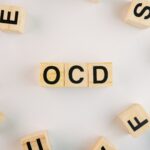May is National Speech-Language-Hearing Month—a time dedicated to raising awareness about speech and communication challenges in children, and celebrating the vital work of speech-language pathologists.
If you’ve ever found yourself wondering, “Is my child’s speech on track?” you’re not alone. Many parents have questions about speech development, and knowing what’s typical (and what’s not) can help you decide when to seek support.
In this article, we’ll break down key speech milestones to help you understand what’s typical—and when to take action. If you’re concerned about your child’s speech, Westside offers free screenings with our expert speech therapists. If you’re concerned about your child’s speech, Westside offers free screenings with our expert speech therapists to help determine whether a full speech and language evaluation is needed.
What Is a Speech Delay?
A speech delay occurs when a child is not developing speech and communication skills at the expected rate for their age. This might include challenges with speaking clearly, using age-appropriate words, or forming sentences.
It’s important to note that speech delays are different from language delays. Speech refers to how we say sounds and words—how clearly we articulate and pronounce them—while language is the broader ability to understand and use words to communicate.
For example, a child with a speech delay might struggle to clearly pronounce certain consonants or vowels. In contrast, a child with a language delay might speak clearly but have difficulty understanding others or forming sentences to express themselves. Some children experience only one type of delay, while others may have both speech and language delays.
Early support can make a big difference in helping your child build the skills they need for school, social relationships, and everyday life.
Typical Speech Milestones by Age
Children develop at their own pace, but these general milestones offer a helpful guide. For more details by age, see the American Speech-Hearing-Language Association’s Communication Milestones.
1-3 Months:
- Smiles at the sound of voice (2-3 mos.)
- Cooing noises – sounds like ooooo, aahh, and mmmmm
- Turns or looks towards people talking
- Startles to loud noise (1-3 mos.)
4-7 Months:
- Giggles and laughs
- Distinguishes emotions by tone of voice (4-7 mos.)
- Responds to sound by making sounds (4-6 mos.)
- Uses voice to express joy and displeasure (4-6 mos.)
- Syllable repetition begins (5-7 mos.)
- Vocalizes different vowel sounds—sometimes combined with a consonant—like uuuuuummm, aaaaaaagoo, or daaaaaaaaaa
8-12 Months:
- Looks at you when you say their name (7-9 mos.)
- Responds to simple verbal requests and “no”
- Babbles with inflection, using consonants and vowels (8-10 mos.)
- Babbles “dada” and “mama” (8-10 mos.)
- Uses exclamations such as “oh-oh”
- Pushes away unwanted objects
- Raises hands to be picked up
- Reaches for objects
- Imitates gestures, like blowing kisses or waving goodbye
12-24 Months:
- Points to object or picture when it’s named for them (18-24 mos.)
- Recognizes names of familiar people, objects, and body parts (18-24 mos.)
- Says several single words (15-18 mos.)
- Uses two-word sentences (18-24 mos.)
- Follows simple, one-step instructions (“Give me the ball.”) (14-18 mos.)
- Follows two-step directions (“Get the cup, put it on the table.”) (18-24 mos.)
- Repeats words overheard in conversations (16-18 mos.)
- Uses gestures when excited, like clapping or jumping
- Uses possessives, like “Mommy’s shoe”
24-36 Months:
- Recognizes and identifies almost all common objects and pictures (26-32 mos.)
- Understands most sentences (24-40 mos.)
- Understands physical relationships (on, in, under) (30-36 mos.)
- Can say name, age, and sex (30-36 mos.)
- Uses pronouns (I, you, me, we, they) (24-30 mos.)
- Correctly produces p, b, m, h, w, d, and n in words
- Asks questions like “why” and “how”
- Uses –ing verbs like jumping or standing. Adds –ed to the end of words to talk about past actions, like bounced or played
3-4 Years:
- Tells stories
- Asks questions
- Speaks in sentences of 5-6 words
- Understands the concepts of “same” and “different”
- Compares objects, using words like “bigger”, “shorter”, “taller”
- Correctly produces t, k, g, f, y, and –ing in words
- By age 4 years, your child speaks so that people can understand most of what they say
- Child may make mistakes on sounds that are later to develop—like l, j, r, sh, ch, s, v, z, and th 7, 1, 30, 2, 4
- By age 4 years, your child says all sounds in a consonant cluster containing two or more consonants in a row—like the tw in tweet or the –nd in sand. May not produce all sounds correctly—for example, spway for “spray.” 8, 40
4-5 Years:
- Speaks sentences of more than 5 words
- Uses future tense
- Tells longer stories
- Can count 10 or more objects
- Correctly names colors
- Better understands the concept of time
- Knows about things used every day in the home (money, food, etc.)
- Blends word parts, like cup + cake = cupcake. Identifies some rhyming words, like cat and hat 32
- Produces most consonants correctly, and speech is understandable in conversation 1, 30, 9
Signs Your Child May Have a Speech Delay
Every child is unique, but if you notice delays in the milestones by age provided above, or in any of the following, it may be worth seeking guidance from a speech-language pathologist:
- Not babbling or making sounds by 12 months
- Limited vocabulary for their age
- Difficulty combining words into phrases or sentences
- Trouble understanding or following directions
- Frustration when trying to communicate
- Speech that is difficult for others to understand
Trust your instincts—if something doesn’t feel quite right, it’s okay to ask questions. While pediatricians focus on your child’s overall health, concerns about speech and communication are best evaluated by a licensed speech-language pathologist who specializes in working with children.
The Importance of Early Intervention
Early intervention is one of the most effective ways to help children overcome speech and language delays. The earlier support begins, the more progress your child is likely to make. If you’re unsure whether your child needs help, a screening can provide clarity and peace of mind.
Communication and language delays are often one of the earliest signs that a child may need developmental support. When these concerns arise, it’s important to address them early. Getting help sooner rather than later can lead to better outcomes—early intervention gives children the best chance to make meaningful progress, rather than waiting and hoping things will improve with time.
Westside’s Approach to Pediatric Speech Therapy
At Westside Children’s Therapy, our speech-language pathologists specialize in working with young children. We focus on making therapy fun, engaging, and individualized for your child’s specific needs. Our team uses evidence-based techniques in a playful setting to help children build communication skills and confidence.
Whether your child needs support with articulation, language development, or social communication, we’re here to help them thrive.
Free Speech Screenings at Westside
If you’re concerned about your child’s speech, we encourage you to take advantage of our free screenings. These screenings are quick, low-pressure, and conducted by licensed pediatric speech-language pathologists.
They’ll help you determine whether your child is meeting communication milestones and whether a full speech and language evaluation is recommended.
For more information, call us at (815) 469-1500 or click the link below.







